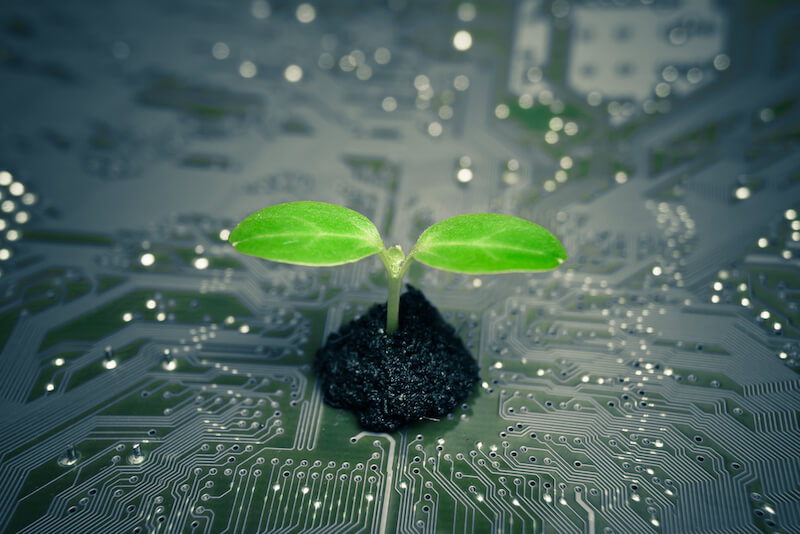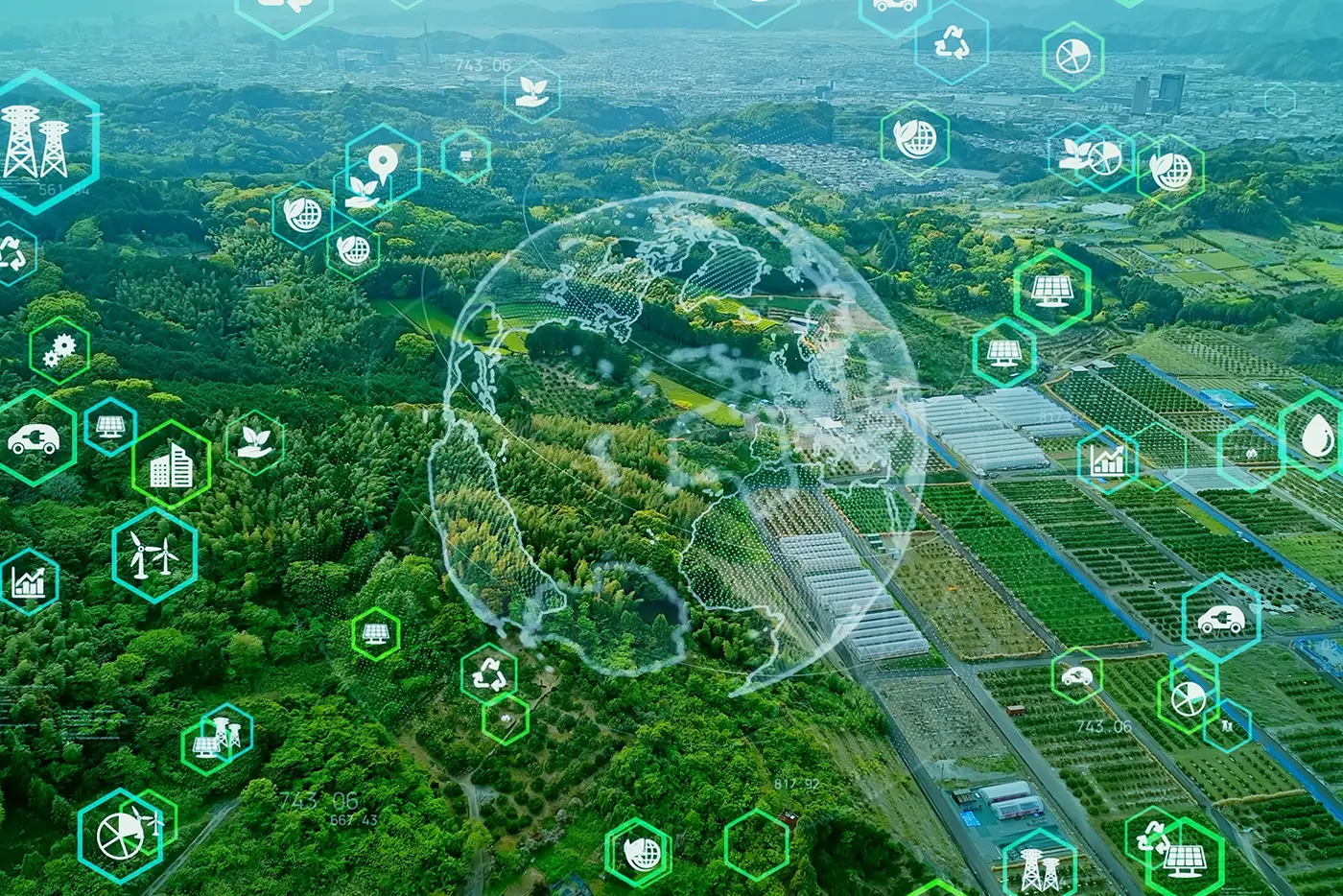Climate change is one of humanity’s greatest challenges. Rising global temperatures, extreme weather events, and environmental degradation make effective solutions critical. Artificial Intelligence (AI) has gained significant attention, with many believing it could be the key to solving the climate crisis. But is AI the solution, or is it just hype? In this article, we’ll explore how AI is currently being used to tackle climate change and whether it has the potential to make a meaningful difference.
The Role of AI in Climate Change
AI has the potential to revolutionize how we approach climate change. It can help reduce emissions, optimize energy use, and even predict future environmental trends. A major benefit of AI is its ability to process vast amounts of data—critical for understanding and addressing climate change. Machine learning algorithms analyze environmental patterns, track greenhouse gas emissions, and predict weather changes. This can guide policy decisions and optimize climate strategies.
For example, AI-powered systems help businesses and governments optimize energy usage in real-time. This leads to a reduced carbon footprint. AI can also improve transportation systems by predicting traffic patterns and optimizing routes, cutting fuel consumption. By processing real-time data, AI can forecast extreme weather events, enabling authorities to act swiftly and reduce damage.
Real-World Case Studies

AI in Renewable Energy: Google’s DeepMind and Wind Energy
Google has used AI to enhance its renewable energy efforts. In 2017, DeepMind developed an AI algorithm to predict wind farm energy output. This AI analyzes weather forecasts and adjusts the predictions in real-time. The result is more accurate energy production estimates, helping grid operators manage energy distribution. Google’s system increased energy value by up to 20%, making renewable energy more reliable and reducing reliance on fossil fuels.
Impact on the Energy Sector: Google’s AI-driven wind farm optimization helps reduce emissions from fossil fuels. It creates a more sustainable energy grid by improving grid management, reducing energy waste, and increasing renewable energy integration.
AI in Agriculture: IBM’s Watson Decision Platform for Agriculture
IBM’s Watson Decision Platform for Agriculture combines AI, IoT, and weather data to help farmers make data-driven decisions. The platform allows farmers to monitor soil health, track weather patterns, and predict crop yields. By using AI-driven insights, farmers can optimize water use, reduce fertilizer application, and lower their carbon footprint. In India, the platform has helped farmers increase productivity while using fewer resources. This shows AI’s potential to address food security and reduce farming’s environmental impact.
Impact on Agricultural Practices: AI in agriculture reduces resource usage, minimizes environmental harm, and maintains agricultural productivity.
AI in Carbon Capture: Carbon Clean Solutions
Carbon Clean Solutions enhances carbon capture technologies using AI. The company developed an AI-powered platform that monitors and optimizes carbon capture systems. By analyzing large datasets, the AI detects inefficiencies and suggests real-time corrective actions. This improves CO2 capture, which can be stored or used in industrial processes. Carbon Clean’s system has been successfully implemented in industries like cement manufacturing, leading to a reduction in carbon emissions.
Impact on Carbon Emission Reduction: AI’s role in carbon capture helps reduce emissions in industries with high carbon output, like cement production and steel manufacturing.
AI in Disaster Response: The European Space Agency (ESA)
The European Space Agency (ESA) uses AI to enhance disaster response and climate monitoring. ESA’s Earth Observation program uses AI to analyze satellite imagery and track natural disasters, such as wildfires, floods, and hurricanes. In 2019, AI models helped predict wildfire behavior in Australia, aiding firefighters’ decision-making. With satellite data and machine learning, AI plays a critical role in minimizing the impact of climate-related disasters and improving response times.
Impact on Climate Crisis Management: AI’s role in disaster prediction and response improves resource allocation, ultimately saving lives and minimizing damage.
AI in Emission Tracking: Climate TRACE
Climate TRACE is an initiative that uses AI to track global greenhouse gas emissions. It combines satellite data and remote sensing technologies to identify emissions sources. AI models track emissions in real time, helping governments and organizations target their mitigation efforts. This initiative promotes transparency and accountability by offering a more accurate view of global emissions.
Impact on Global Emission Monitoring: AI’s real-time tracking helps pinpoint regions and industries with high carbon footprints, informing global emission reduction strategies.
Challenges and Limitations

While AI holds great promise, it is not a silver bullet. Several challenges need to be addressed before AI can effectively contribute to solving climate change. One major hurdle is the energy consumption of AI itself. Training large AI models requires significant computational power, which can lead to high energy consumption. If AI solutions are not developed with sustainability in mind, they could end up contributing to the very problem they aim to solve.
Another challenge is the need for accurate and comprehensive data. AI models are only as good as the data they are trained on, and climate change data is often fragmented, inconsistent, and difficult to obtain. This makes it harder for AI to provide reliable solutions without overcoming significant data-related hurdles.
Is AI the Answer?
AI’s potential to address climate change is significant, but it is not a silver bullet. While AI can optimize energy systems, reduce emissions, and predict environmental trends, it must work alongside other technologies and global efforts to make a real difference.
For AI to be truly effective, accurate and comprehensive data is essential. However, climate-related data is often fragmented or inconsistent, and filling these gaps will require international collaboration. AI’s success also depends on integrating it with other advancements, such as renewable energy technology and sustainable farming practices, for optimal results.
Furthermore, AI should complement human decision-making, not replace it. Policymakers and governments still need to make decisions based on AI’s insights. AI can assist in simulating policy outcomes and improving decision-making, but its use must be guided by human judgment and societal goals. AI’s energy consumption must also be considered, as training large models can have significant environmental impacts. The development of “green AI,” which minimizes energy use while maintaining efficiency, is crucial.
Ultimately, AI can play a crucial role in combating climate change, but it needs to be part of a broader strategy, including technological, social, and political efforts.
Ethical Considerations
AI’s role in climate change solutions raises ethical issues. For example, automating certain processes may lead to job displacement in industries affected by AI technologies. AI’s involvement in surveillance and data collection could raise privacy concerns, especially during disaster response or emissions tracking. Ensuring ethical AI practices, transparency, and inclusivity is critical to ensuring AI contributes positively to climate action without exacerbating social inequalities.
In conclusion, AI presents promising solutions to climate change challenges. But it must be seen as part of a broader strategy. The collaboration between AI, human innovation, and global efforts will be essential in ensuring AI contributes to mitigating climate change and creating a more sustainable future.
FAQs:
- Can AI help reduce carbon emissions?
Yes, AI can help reduce carbon emissions by optimizing energy use, improving transportation systems, and enhancing renewable energy production. - What role does AI play in renewable energy?
AI helps optimize the performance of renewable energy sources like wind and solar by predicting energy output, improving storage systems, and balancing supply and demand. - Is AI already being used in climate change solutions?
Yes, AI is being used in several sectors, including agriculture, renewable energy, and carbon capture, to reduce environmental impact and improve efficiency. - What are the limitations of using AI for climate change?
AI’s energy consumption and reliance on accurate data are major limitations. Additionally, AI is not a stand-alone solution and must be combined with other strategies to be effective. - Can AI predict extreme weather events?
Yes, AI can analyze climate data to predict extreme weather events, allowing authorities to prepare and mitigate potential damage. - Does AI have any negative environmental impact?
AI can have a negative environmental impact if not developed sustainably, as training large models requires significant computational power, which can lead to high energy consumption. - Will AI completely solve climate change?
AI alone will not solve climate change. It is an essential tool that can help address various aspects of the crisis, but a comprehensive approach is needed.

